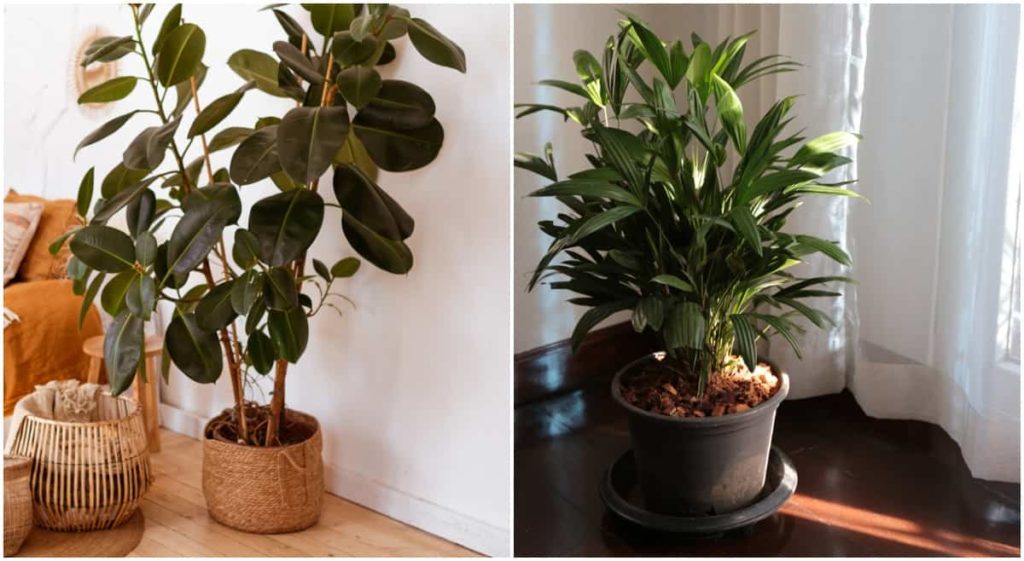
Amidst the houseplant craze of the past several years, many indoor gardeners have graduated from struggling to keep a single pothos alive to mastering multiple plants at one time.
As we houseplant parents slowly build up our collections, there is one feature almost everyone cannot miss out on in their homes – indoor trees.
Towering over furniture and in tall corners like no other decor can, indoor trees are the ultimate houseplant statement piece.
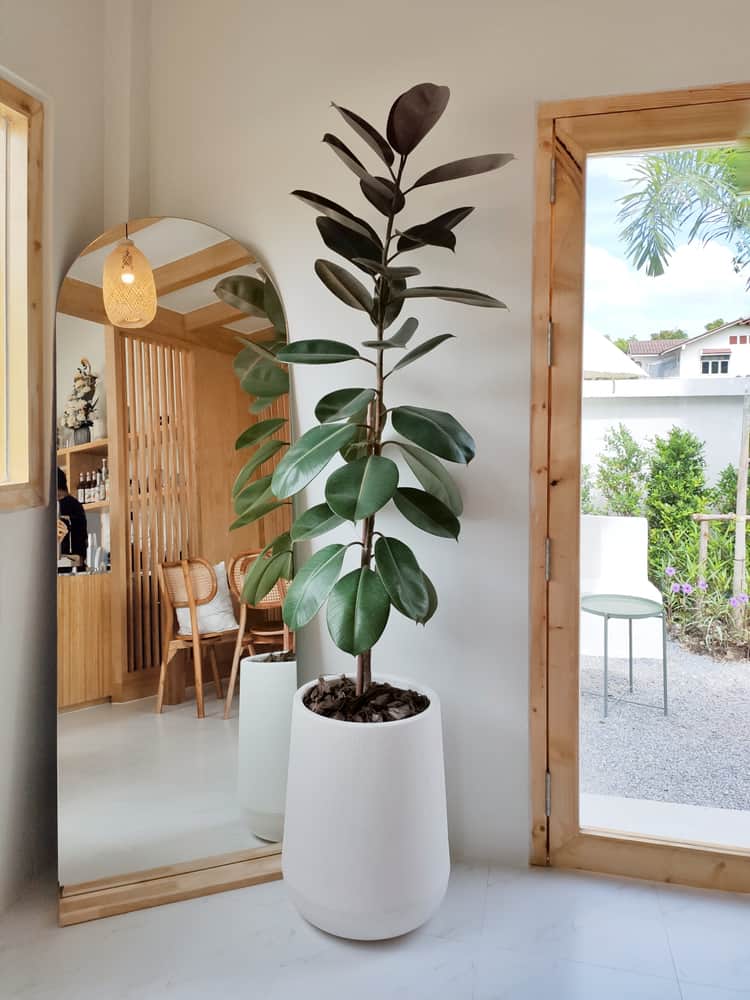
As established plants with deep root systems and several years under their belts, they are also relatively easy to care for – even when it comes to light requirements.
There are several potted trees that grow well indoors, and a few of those can even handle lower light conditions.
While most trees would normally prefer as much bright indirect sunlight as possible, these plants either maintain their growth or don’t show any signs of stress in darker corners.
If you have a room with only a small window or have used up all the space next to your bright window for your fussier plants, these six trees are ideal.
There are also several indoor trees that, no matter how popular they are or how lovely they look, should not be grown in low light under any circumstances.
They may even appear on some low-light houseplant lists, despite the adverse effects they face under those conditions. If you want these six trees to be happy and healthy indoors, give them as much light as possible.
6 Low Light Indoor Trees
1. Rubber Plant
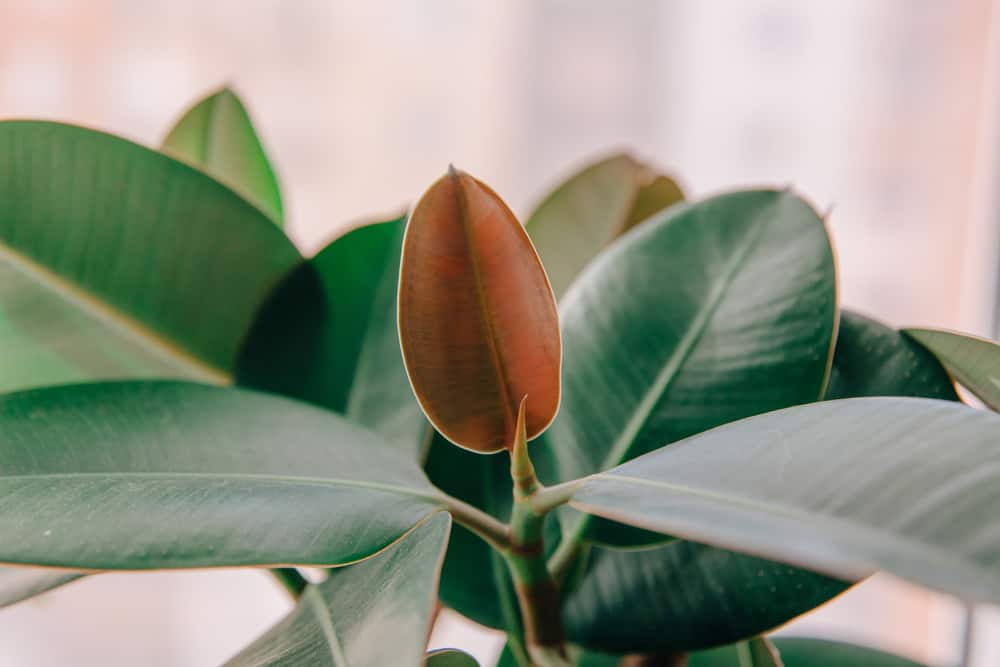
Featuring high on many popular indoor plant lists is the Rubber plant – Ficus elastica. Given the space, these trees can grow anywhere from 6 to 10 feet tall indoors, and even taller outdoors.
Rubber plants suit any space, with their broad, waxy leaves either blending in with your indoor forest or standing out as a spectacular feature. Depending on the variety you choose, these leaves could either be deep green, tricolor or almost black.
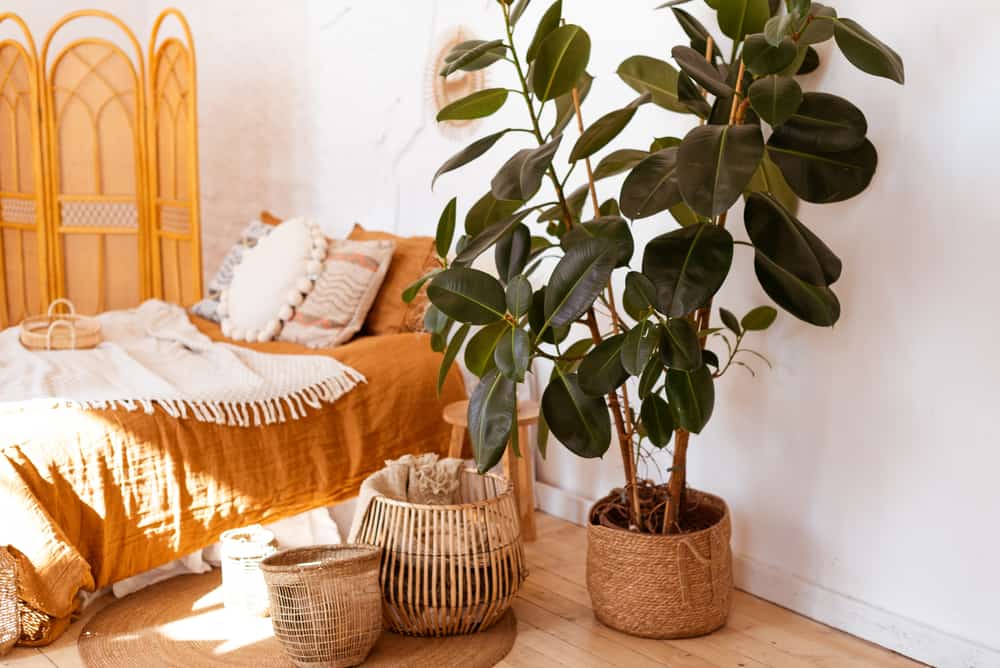
Their tropical heritage allows them to flourish indoors, even in lower lighting conditions. Buying a larger, more established tree is recommended, as smaller rubber plants will grow very slowly in low light conditions. Once they’ve reached their desired height, they will survive in lower light without much trouble.
Rubber plants are relatively laid back, tolerating a little neglect every now and then. They enjoy moist soil but will prefer to dry out a little before your next watering.
Add this plant to your collection with this 24 inch tall plant from Costa Farms.
2. Dragon Tree
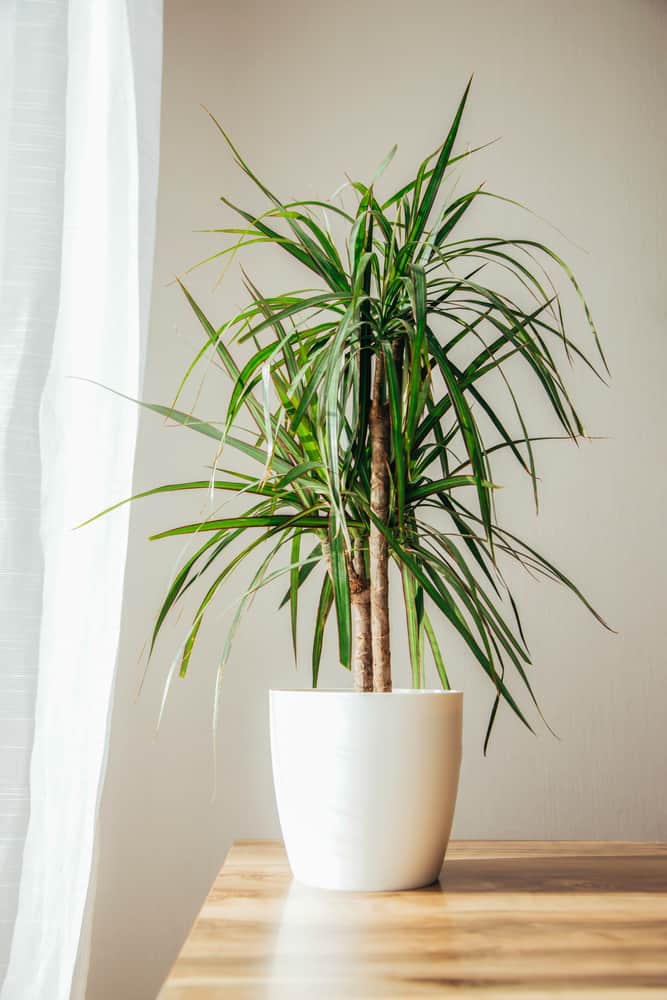
Dragon trees (Dracaena) are famous for their hard-to-kill nature, suiting newbie gardeners and the forgetful plant parent. Although they love plenty of sunlight, dragon trees can still prosper in the darker corners of your home. They’ll grow a little slower, but they will definitely grow.
Dragon trees are a striking addition to any space. Their narrow blade-like leaves are edged in red or purple, depending on the variety, and add sharpened texture to your home.
These trees truly are easy to care for, needing water only when the soil has dried out completely.
The only thing dragon trees can’t tolerate is cold and dry air. It’s best to keep your dragon tree away from air conditioners or drafty windows, or else you’ll be faced with brown or yellowing leaves.
Dragon trees are toxic to cats and dogs, so keep prying paws and inquisitive noses away from them.
The Sill offer this beautiful and large dragon tree if you’d like to add this plant to your collection.
3. Lady Palm
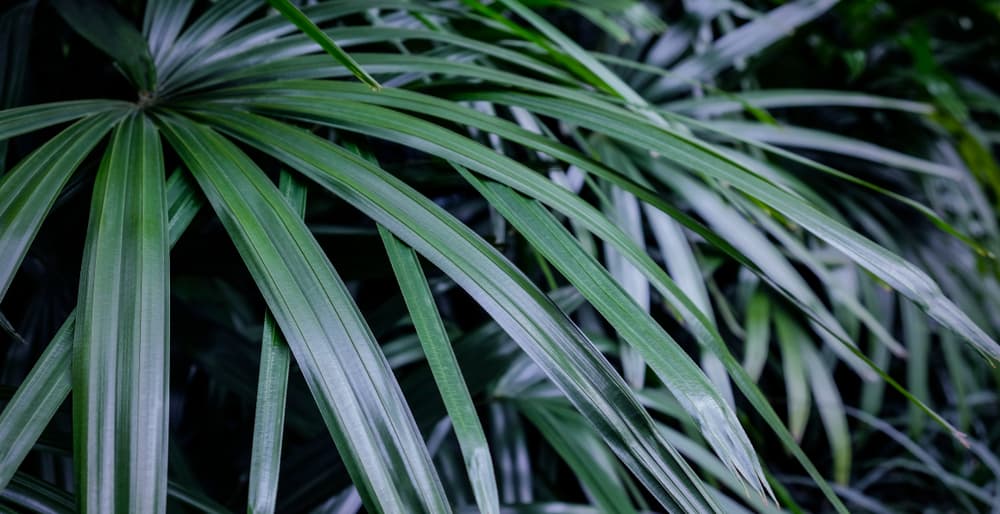
This slow-growing beauty is the perfect indoor tree, tolerating low light and thriving in typical household temperatures.
Lady palms (Rhapis excelsa) are smaller trees, but their cluster fan-like fronds make up for the shortness. Lady palms slot well into corners with the shiny, green fronds comfortably filling any available space.
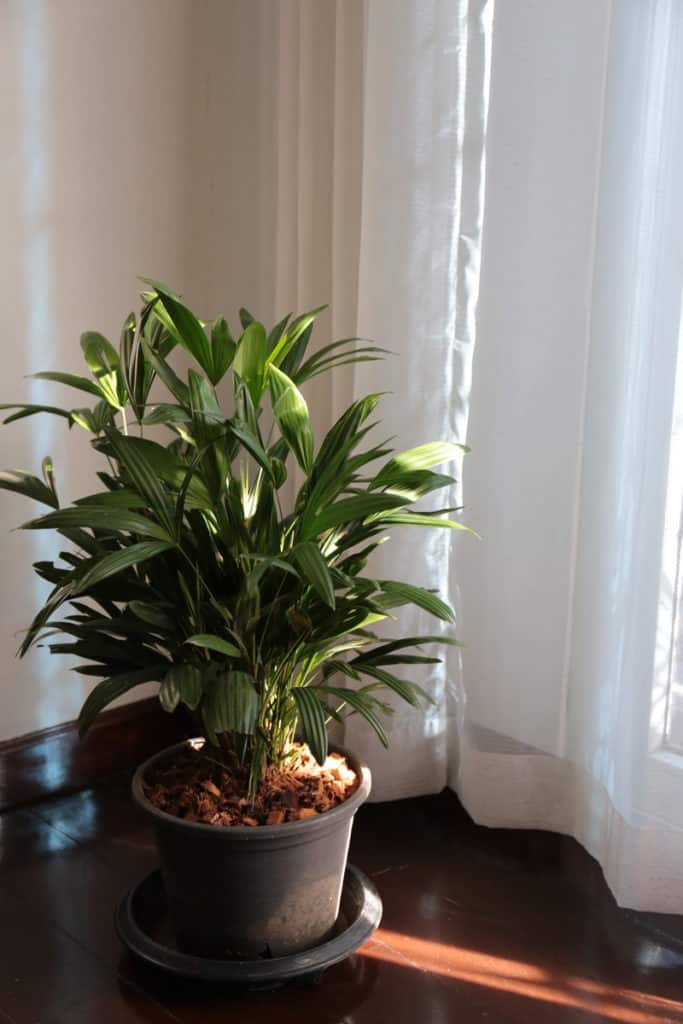
Once established, lady palms can be somewhat drought tolerant, but don’t neglect this plant too much. They’ll prosper best with regular water and fertilizing. In summer and spring, lady palms need water as soon as the top layer of soil feels dry.
These warmer months also call for a monthly feeding with a liquid houseplant fertilizer. Lady palms don’t need to be fertilized during the colder months, and they need less water too.
Other than that, lady palms are relatively easy to care for, needing only the occasional prune to maintain their shape or to rid them of dead fronds.
4. Parlor Palm
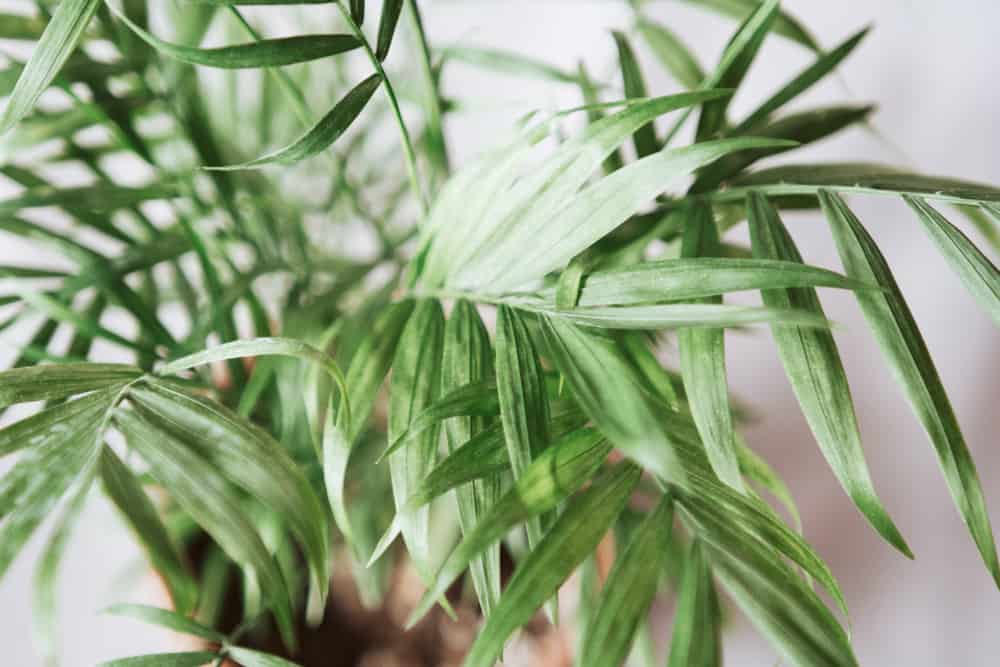
Parlor palms (Chamaedorea elegans) are often the first to come to mind when thinking of indoor trees. Their indoor plant history goes back to the Victorian era, where they were kept as decorative parlor plants. They’ve maintained their popularity throughout and are often the go-to plant for first-time indoor tree gardeners.
Parlor palms add a touch of summer to any space with tropical fronds and ridged bamboo-like stems. Adding to this stunning plant’s popularity is its ease of care.
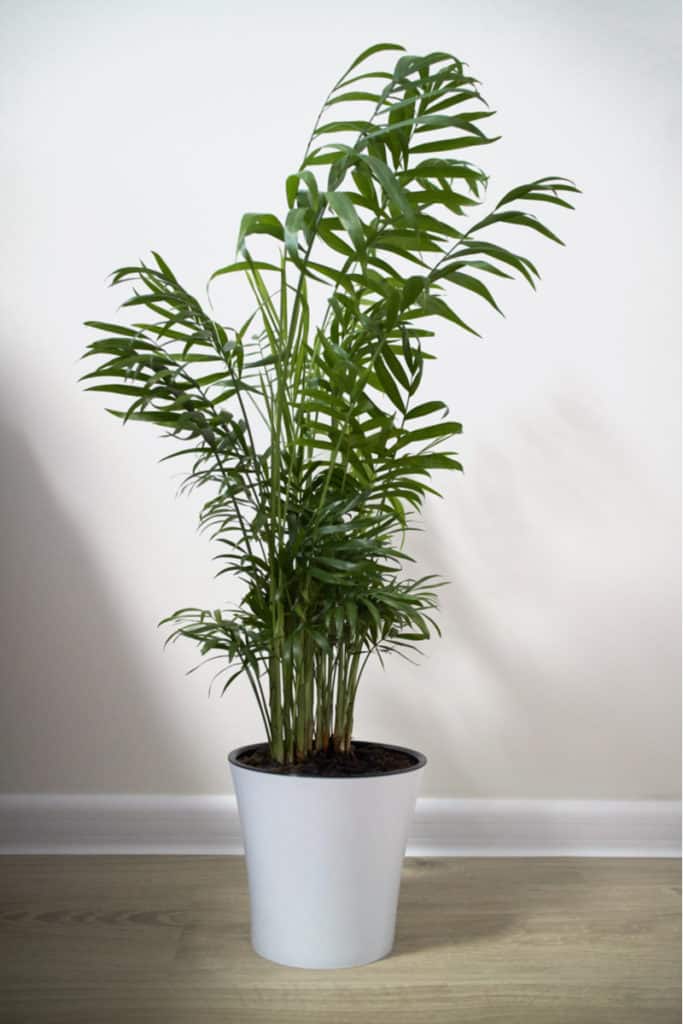
They adapt quickly indoors, learning to thrive in low light conditions. Once settled, they will even tolerate some neglect.
Parlor palms are somewhat drought tolerant, bouncing back quickly after a few days of no water. Like most indoor plants, soggy soil should be avoided at all costs, or devastating rot may develop.
Parlor palms also don’t tolerate dry or cool air, preferring humid, warm conditions. You can easily increase the humidity in your home using a humidifier. It’s also best to keep your parlor palm away from air conditioners, drafty windows, and heaters during winter, which produce dry air.
If you’d like to add this indoor tree to your home, The Sill have a beautiful parlor palm for sale here.
5. Alii Ficus
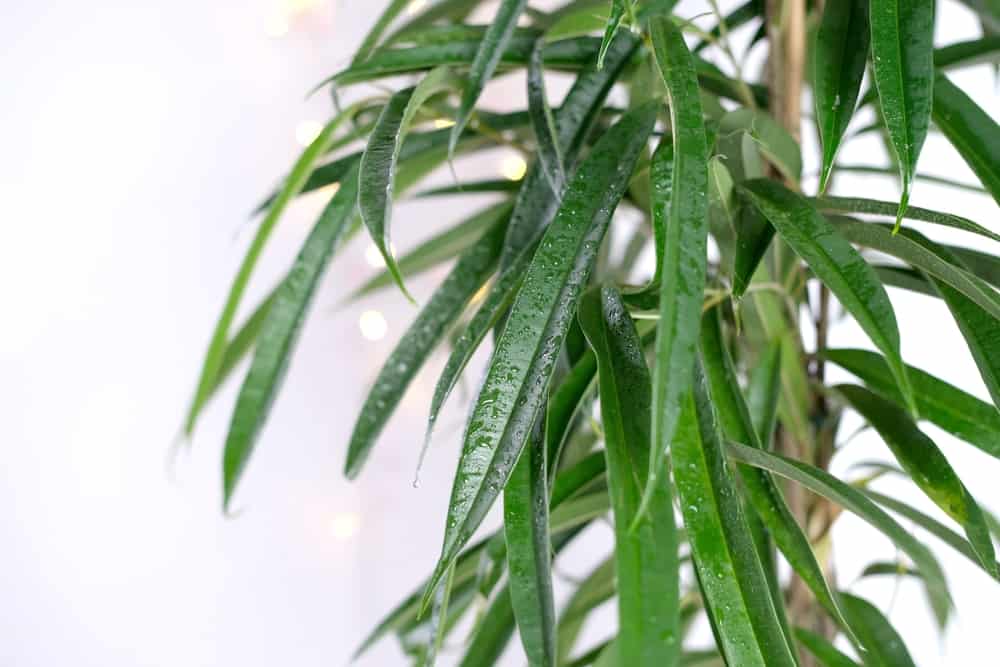
It’s safe to say that no indoor tree collection is complete without a ficus. The Alii Ficus (Ficus maclellandii), or Banana leaf ficus as it’s more commonly known, is a relatively new tree to the houseplant market and a must-have for ficus collectors.
The banana leaf ficus has long, sword-like leaves that sprout a reddish color and eventually turn deep green.
Like other ficus’s, the banana leaf ficus adds a splash of the tropics to your home. Its drooping leaves also soften a room while still adding interesting texture. This unique plant can also be pruned and manipulated to suit your desired houseplant design aesthetic.
The Alii ficus is less temperamental than other members of the ficus family. They’re not as prone to drop their leaves if faced with somewhat imperfect environments, happily thriving in low light conditions.
The banana leaf ficus also tolerates temperature fluctuations, handling short periods of excessive cold and heat well.
These plants are only fussy about one thing – water. The Alii ficus needs plenty of water and constantly moist soil to truly prosper.
6. Corn Plant
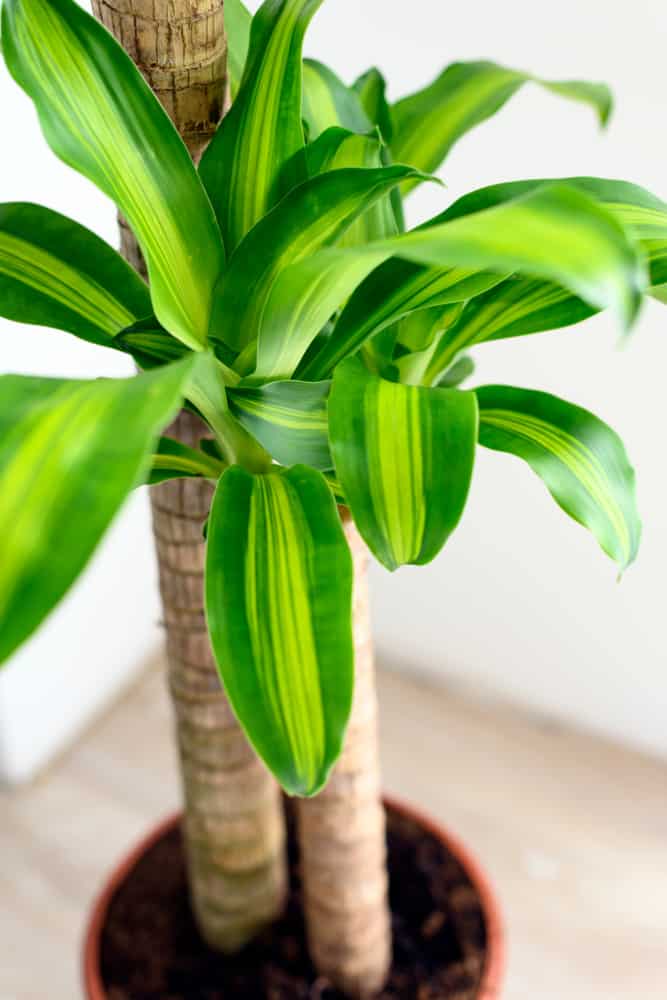
Corn plants (Dracaena fragrans) are an interesting tree to add to your indoor plant collection. A member of the Dracaena family, the long, slender leaves grow upward from thick stems, like corn or palm trees. Because of this, they’re also called ‘fake palms’.
The leaves are made even more striking by the wide yellow stripe that runs down the middle. Like palms, corn plants drop lower growing leaves, exposing the thick ridged stem that adds to this plant’s allure.
Corn plants aren’t difficult, needing little light to thrive. Too much sunlight will burn the leaves and may eventually stunt growth.
For a healthy corn plant, plant in well-draining soil and ensure that it stays moist. They also do best in high humidity environments, but these conditions are easy to replicate using a humidifier.
The only downside to corn plants is that they’re toxic to both cats and dogs, causing severe symptoms if any part of the plant is ingested.
6 Trees Not To Grow In Low Light
1. Fiddle Leaf Fig
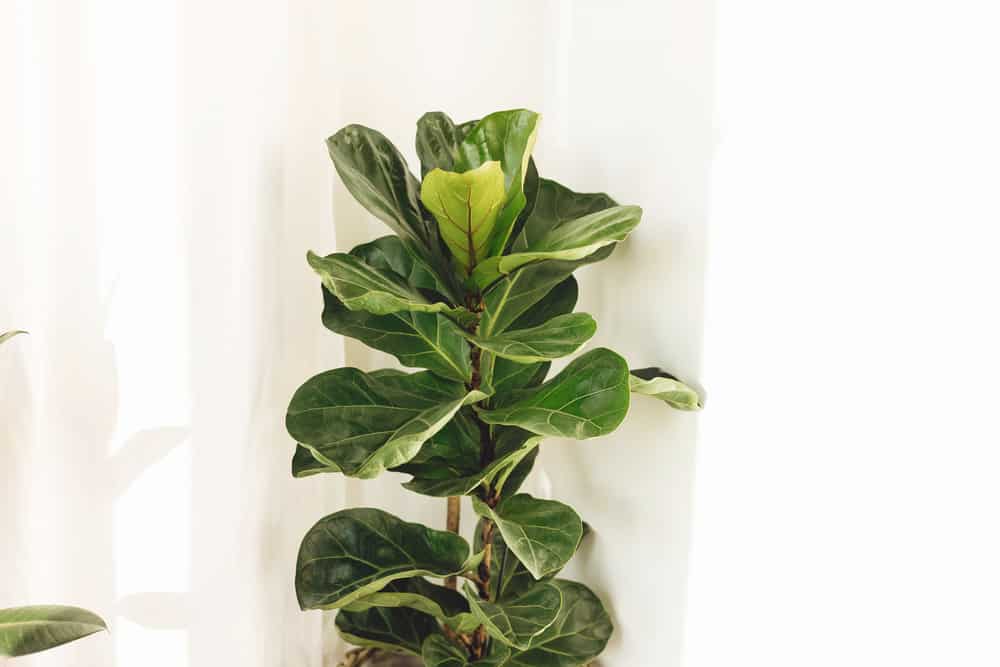
Fiddle leaf figs (Ficus lyrata) are probably the most popular indoor tree, rivaling parlor palms. Their big, dark green violin-shaped leaves are a dramatic statement in any space, especially indoors.
They complement most interior design styles, from bohemian to modern. Fiddle leaf figs are relatively fast growers and, if given the right care, will quickly grow taller than six feet.
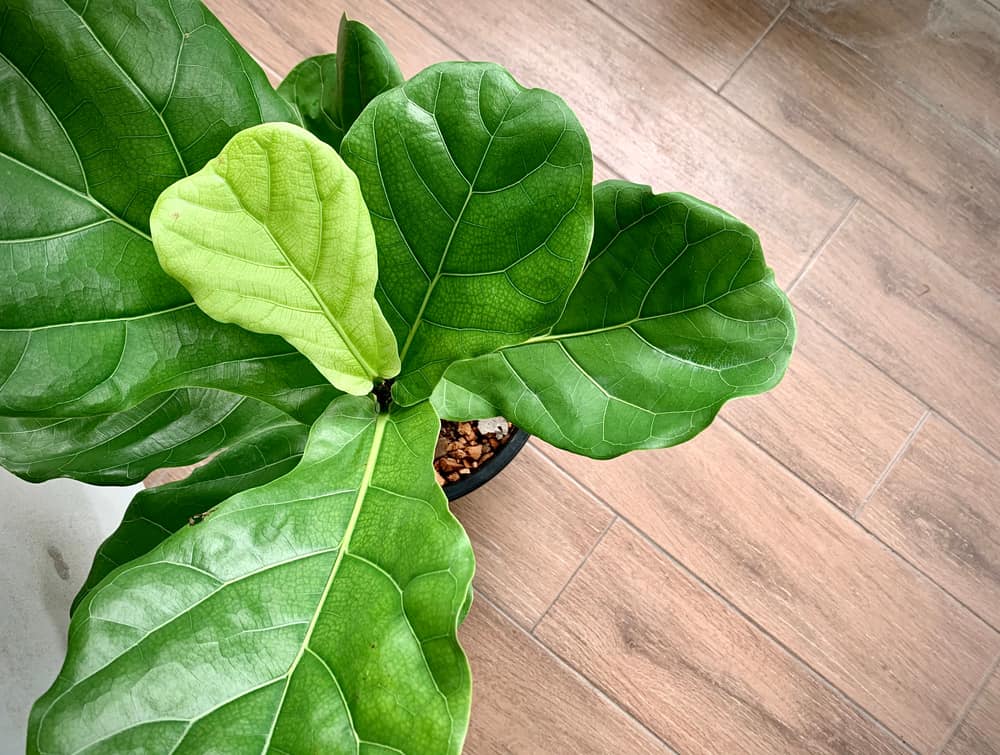
Fiddle leaf figs aren’t demanding, as long as their light conditions are met. Unfortunately, this means it’s not the plant for dark, shaded corners as it needs plenty of bright indirect light year-round to flourish. In low light conditions, the leaves may turn yellow and fall off, detracting from the bushy, full look this tree is known for.
Fiddle leaf figs also need to be rotated every few weeks so every inch of the plant gets some light. They also benefit from the occasional wipe down as their large leaves catch plenty of dust.
2. Bird of Paradise
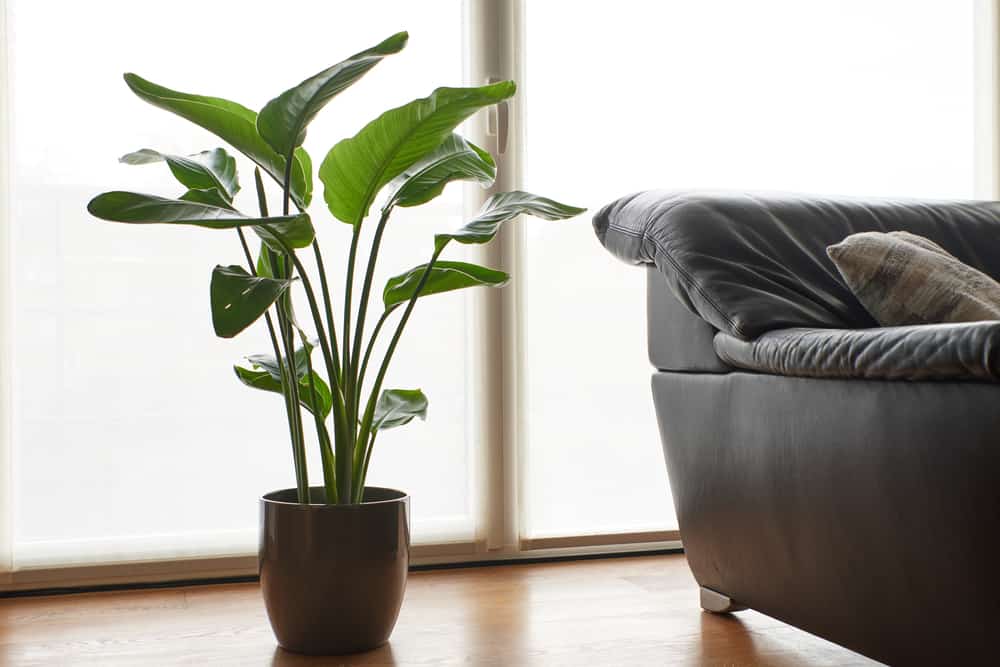
Although the bird of paradise (Strelitzia) isn’t technically a tree, its height allows it to easily pass as one.
Its large, banana-shaped leaves take up plenty of space as they fan out.
Birds of paradise are popular not only for their tropical looks and striking bright orange flowers, but also for their relatively easy-going nature.
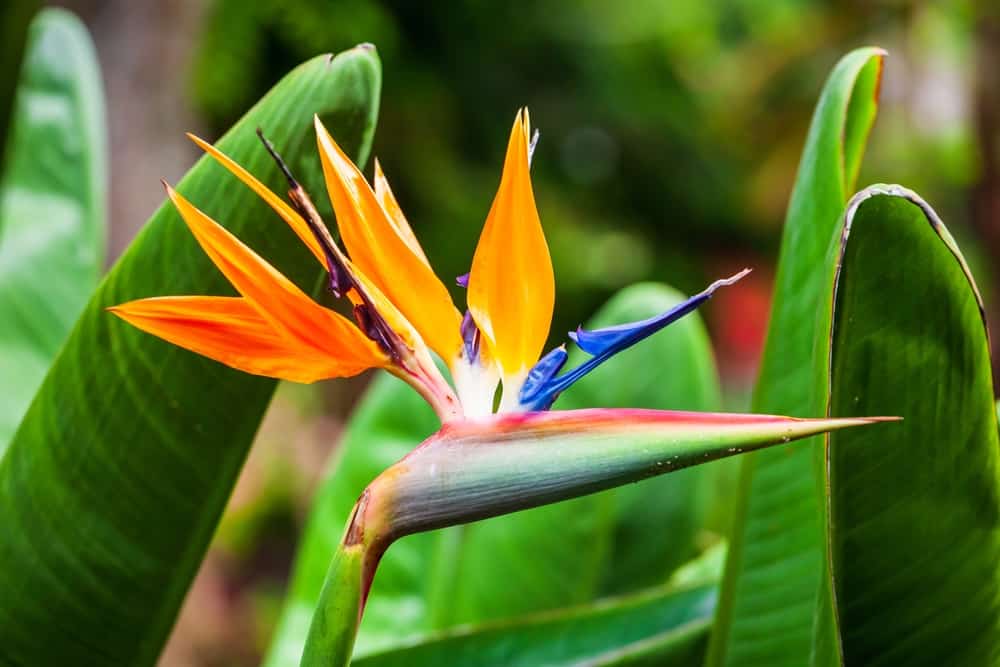
But, even though it may be easy to care for, Strelitzia won’t do well in low-light conditions. They need plenty of direct sunlight to prosper and maintain their speedy growth. These plants are also quite thirsty, needing consistent watering and moist soil.
3. Banana Tree
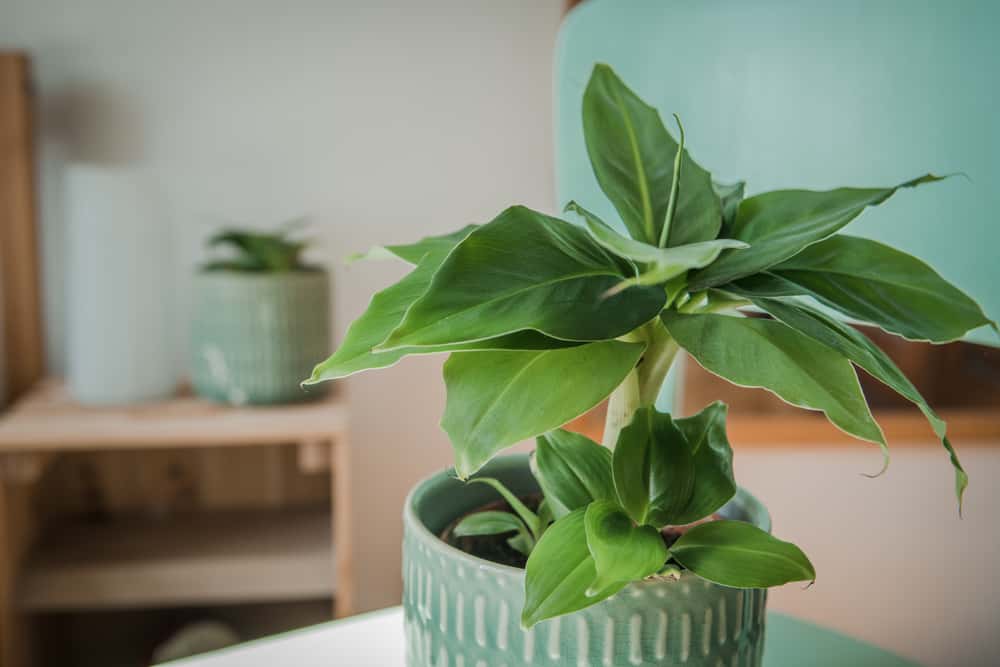
Banana trees are the ultimate plant for an indoor tropical paradise. Their large, wavy leaves set the jungle mood better than most and they can easily fill any empty space in your home. This has made bananas popular houseplants, despite the fact that they don’t grow particularly well indoors.
Banana trees need at least six hours of direct outdoor sunlight per day to thrive. The quality of light indoors is usually not strong enough to sustain the healthy growth of these plants. They’re also extremely thirsty, needing frequent, deep watering and high humidity levels.
You can easily increase the humidity in your home with a humidifier. You can also maintain soil moisture by mulching around the base of the tree. But, even with bright light right next to a window, you may need to move your banana tree outside so it can get the sun it truly needs to flourish.
4. Weeping Fig
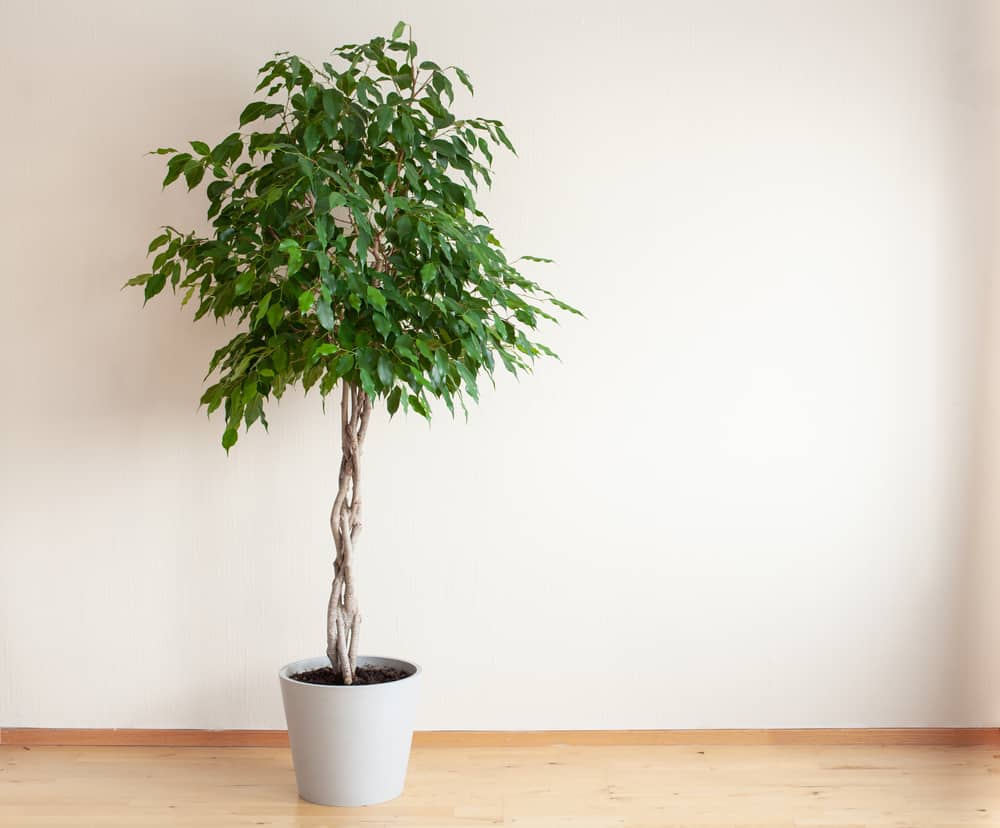
A common misconception when it comes to Weeping Figs is that they can tolerate low light conditions.
This elegant plant, with its elegant stem and drooping leaves, actually needs a full day of bright, indirect sunlight, especially when grown indoors.
Weeping figs are fussier than other members of the ficus family, tolerating far less than the aforementioned Alii ficus. Temperature fluctuations and lack of humidity can cause dry and shriveled leaves.
Inconsistent and inadequate watering will stress the plant, causing its leaves to drop. Leaf drop will make the plant look incredibly sparse and unhealthy – not an ideal indoor plant feature.
While the weeping fig is a popular indoor plant, often being marketed as the ‘it’ plant for indoor jungles, it’s not the easiest to care for, certainly not in low light conditions.
5. African Candelabra Tree
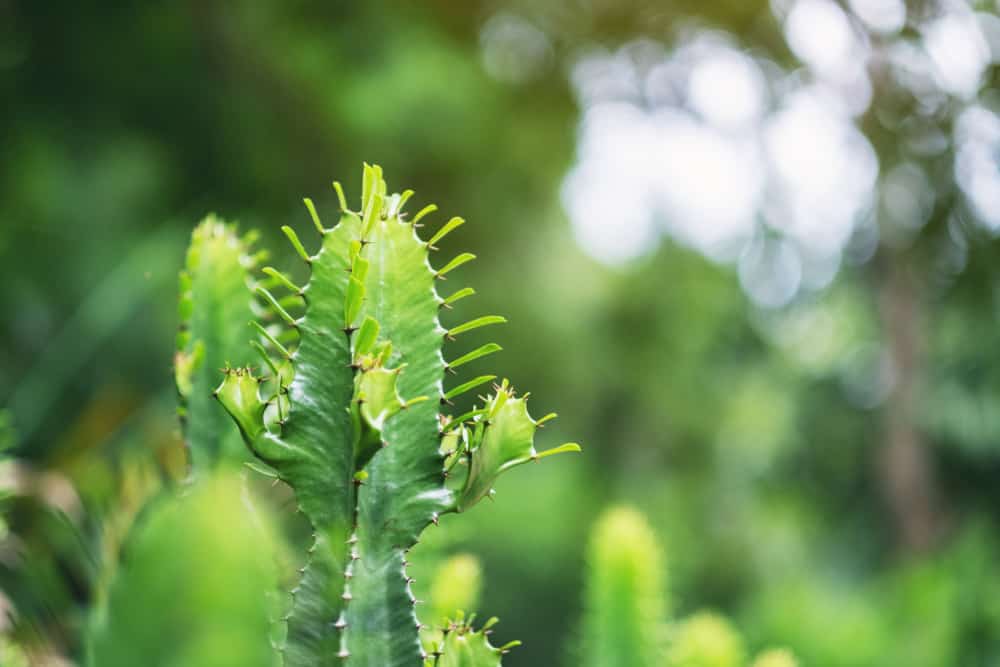
Although not a true cactus, the African candelabra tree looks just like one, making it a unique addition to your indoor plant collection.
This succulent-like plant does have very specific needs though, thanks to its southern African roots and leaf structure.
Like most succulents, this plant does not tolerate low light conditions at all, even if it seems like it doesn’t mind.
The candelabra tree may not look like it’s struggling initially as the plant can survive tough conditions for several months. However, it will not grow in low light, let alone thrive, and will ultimately die if left this way.
The African candelabra tree will grow best in the sunniest spot in your house, ideally next to a bright window, or outdoors.
Other than those specifics, this plant will tolerate plenty of neglect. The occasional watering when the soil is dry will suffice – don’t worry if you forgot about it for a week or two.
6. Yucca
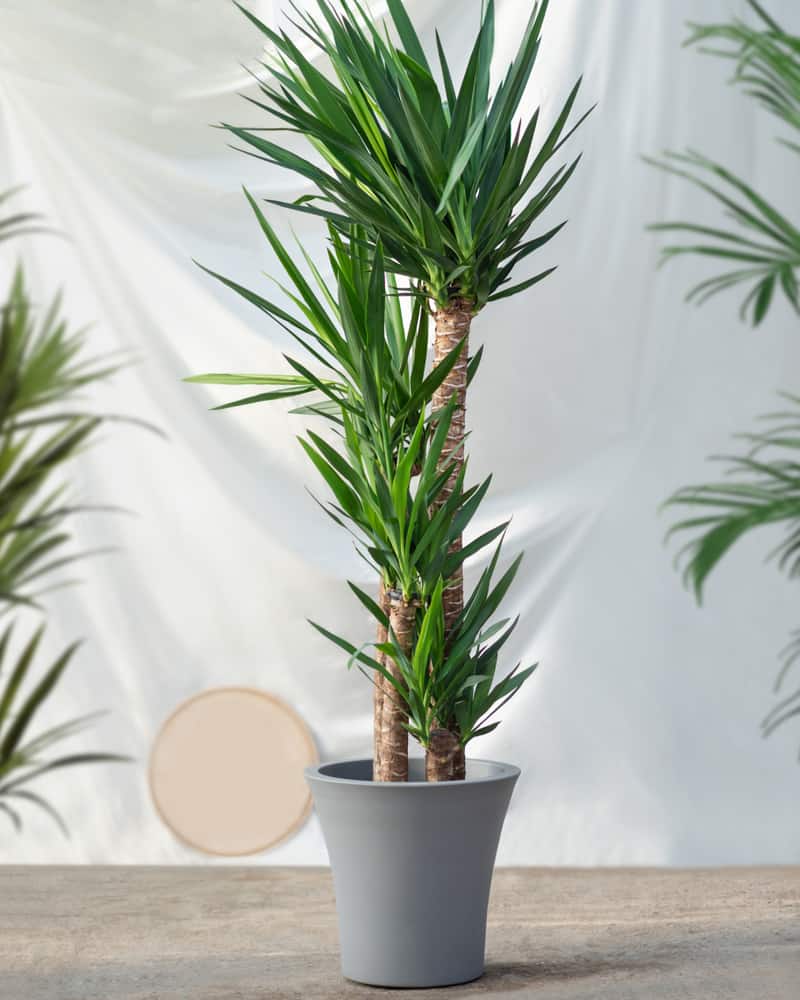
The yucca is another indoor tree staple. You have to look no further than its long, spiking leaves to understand why.
Their popularity is only fuelled by their easy-going nature. But, contrary to some suggestions, yucca can’t thrive in anything less than full sunlight. Low light conditions cause thinning and can slow down the growth of an already slow-growing plant.
This plant is relatively drought tolerant and if given enough sunlight, will happily tolerate a few days of neglect.
